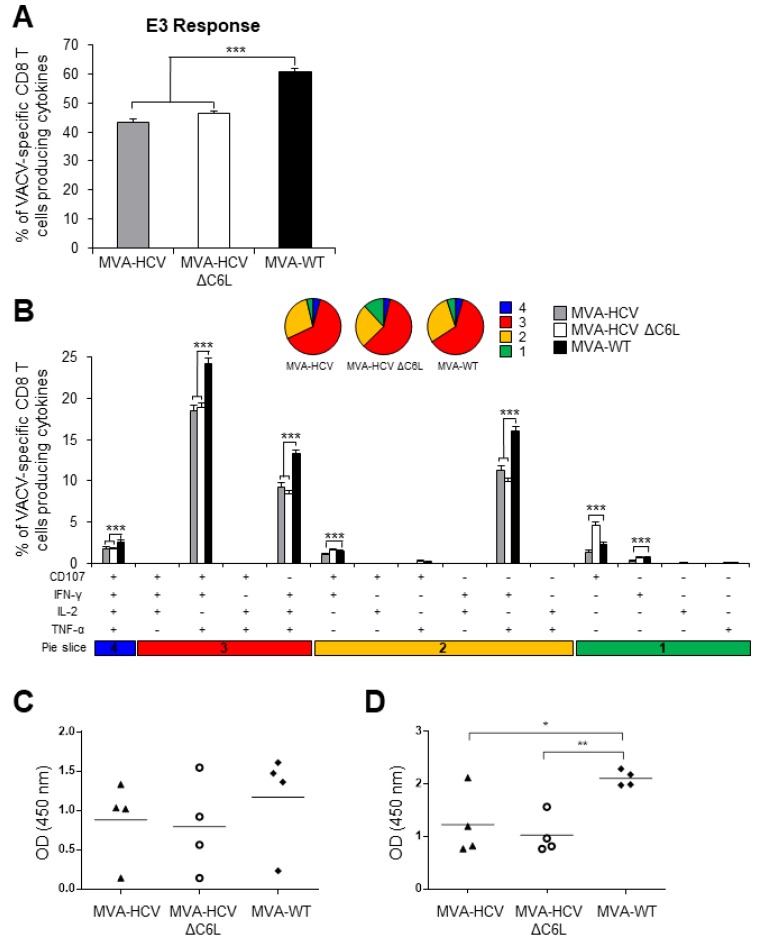Figure 7.
VACV-specific T cell and humoral immune responses induced in immunized mice. Splenocytes were obtained from mice (n = 4 per group) immunized with two doses of MVA-WT, MVA-HCV, or MVA-HCV ∆C6L at 10 days after the last immunization. Then, VACV-specific CD8+ T cell immune responses elicited were measured by ICS after stimulation of splenocytes with VACV E3 peptide. Values from unstimulated controls were subtracted in all cases. p values indicate significantly response differences (*** = p ≤ 0.001). Data is from one experiment representative of four independent experiments. (A) Magnitude of VACV-specific CD8+ T cell adaptive immune responses directed against VACV E3 peptide. The values represent the sum of the percentages of CD8+ T cells producing CD107a and/or IFN-γ and/or TNF-α and/or IL-2. (B) Polyfunctionality profile of VACV-specific CD8+ T cell adaptive immune responses directed against VACV E3 peptide and producing CD107a and/or IFN-γ and/or TNF-α and/or IL-2. Responses are grouped and color coded taking into consideration the number of functions (one, two, three, or four). (C,D) Anti-VACV humoral immune responses. Levels of anti-VACV-specific total IgG binding antibodies were measured by ELISA in serum from mice immunized with two doses of MVA-WT, MVA-HCV, or MVA-HCV ∆C6L at day 10 (C) and at day 53 (D) after the last immunization. Absorbance values (measured at 450 nm) correspond to 1/100 dilution of individual serum, and each mouse is represented by a dot. The mean ± SD are indicated. p values indicate significantly response differences (* = p ≤ 0.05; ** = p ≤ 0.01).

